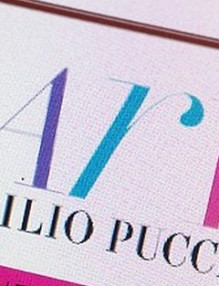Fashion and Capitalism Synergy PART3: Today’s fashion industry most prominent counties
by Kasia Gola
This is a PART 3 of my essay. PART 1 was an introduction and it was about theoretical background – sociology of fashion and PART 2 was about history of fashion.
Today’s fashion industry most prominent counties
Nowadays fashion industry is one of the most important in the economy:
“The global fashion apparel industry is one of the most important sectors of the economy in terms of investment, revenue, trade and employment generation all over the world. Apparel industry has short product life cycles, tremendous product variety, volatile and unpredictable demand, long and inflexible supply processes. The industry has been in a transition over the last 20 years” (Fashion Apparel Industry Overview)
Fashion experts claim that there are several cities which have a great influence on fashion and gave a birth to many excellent designers. Every year brings a new list of 50 the most influential cities in fashion industry, but the first 10 are always similar (plus Madrid which is historically also strongly influential) and “the Big Four” is almost always the same:
-
London
-
New York
-
Paris
-
Milano
-
Los Angeles
-
Hong Kong
-
Barcelona
-
Singapore
-
Tokyo
-
Berlin
(…)
-
Madrid (Fashion Capitals)
On the basis of the fashion history and the Fashion Capitals list we see that traditionally the richest and most powerful countries are at the same time the most influencial in a fashion industry. France, United Kingdom and United States are currently the most powerful and Italy has been making our cultural history through the ages, since the Roman Empire. Top Ten of the most influential fashion cities are often parts of the 2011 prominent countries:
1. The USA
2. China
3. Russia
4. France
5. Germany
6. Japan
7. The UK
8. India
9. Brazil
10. Turkey
Other countries which are similarly powerful to Turkey: Canada, South Korea and Italy (Top10 Most Powerful Countries in 2011).
As I wrote before, fashion business is highly developed in rich and powerful countries. Regions which are not advanced also take the place in this industry, but usually it is a role of the manufacturer (Image 1.). This issue is also connected to other themes like ethical problem of hiring the cheap labor and counterfeiting fashion goods (Hilton B., Chong J.Ch., Stephen Ch., pages 345-354).
The truth is that expanding fashion manufactures to the 3rd World is not only non-luxury, high street brands problem, but it also touches the highest fashion level and designers like Prada who decided to move part of her manufactures to China (Passariello Ch.).
According to these cases, we have to remember that countries like China and India have an extremely huge gap between wealthy and poor people (Schoen J.W.)
To me, it is highly interesting to observe the evolution (or devolution) of the high fashion in Asiatic countries, but it is a process which has just begun, so consequently it is hard to predict which path luxury fashion will choose.Image 1. Fashion Manufacturers
However, traditionally and for today, fashion rulers are mostly western cities. For purposes of this essay I will take a brief overview of “the Big Four”: London (England), New York (United States), Paris (France) and Milano (Italy). Imge 2. Production and consumtion of fashion
United Kingdom is one of the most powerful countries in the world. This, probably, the most popular constitutional monarchy has about 62 million population where more 8.615 million people lives in London. This year’s Fashion Capital, London, is mainly known for Catherine, Duchess of Cambridge and the Alexander McQueen fashion brand which now is run by Sarah Burton who took a company over from a designer after his dead in 2010. The value of the UK fashion industry was £21bn in 2010:
“The direct value of the fashion industry to the UK economy is £21bn Indirect ‘spill over’ effects ranging from IT to tourism puts fashions total contribution at £37bn. Fashion employs 816,000 people directly making 2.8% of total employment in the UK” (British fashion industry…)
England was also a home of the haute-couture’s father – Charles Worth and the luxury fashion’s legendary brand – Burberry. Nowadays the UK’s and London’s position in the world’s fashion industry is, twice a year, sealed by London Fashion Week.
The United States of America is known as the most powerful country and the largest economy in the world with a per capita GDP of $47,200. Its’ population is 313,232,044 (July 2011 est.), so it is the third most populated country (The World Factbook).
With a capital city, Washington and a capital city of fashion, New York, United States makes a highly lucrative business on doing fashion:
“Total USA Apparel sales has reached up to $181 billion with the women’s market leading at around 60% of the total market. Men’s wear leads at a close second followed by the ever rising children’s wear industry. While the U.S. apparel market is mature, it is fragmented with national brands marketed by 20 companies accounting for about 30% of total apparel sales. Private label, or store brands, account for an estimated 40% of all apparel sales providing new areas of growth for some apparel manufacturers(USA Apparel Market Research Report).”
France is widely known as a home of the most popular fashion designers like Louis Vuitton, Chanel, Yves Saint Laurent and more. For ages it was the most influential country in the field of fashion. Nowadays, France is one of “the Big Four” capitals of fashion, the sixth fashion center in the world. Fashion and textiles industries are strongly connected to the tourism industry – actually, France is the most popular touristic destination in the world. More general, textile and tourism industries are very developed there, inter alia thanks to it France has a chance to be such a powerful country with $33,100 GPD per capita in 2010 (France: Strenghts and Weaknesses of Fashion industry and France economy profile).
Italy, it is a country with a high standard of living with a higher GPD than it is average in Europe:
“In 2010, Italy’s GDP was US$ 1,771.14 billion; down from US$ 1,813.23 billion in 2008 before the recession. However, the Italian economy remained the 11th biggest economy in the world during the financial crisis. However Italy’s growth rate shrank 5 percent in 2010 and 1 percent in 2008 (Italy Economy)”.
As we can see, Italian economy is not in the best condition, but it is still one of the most powerful countries in the world. Italian fashion industry is one of the most developed in the world. It is also highly influential. If we treat Milan fashion week as an indicator for contemporary economy – good times are coming. Italy has the most popular luxury brands like Versace or Dolce&Gabbana.
Other sources:
Hilton B., Chong J.Ch., Stephen Ch., The Ethics of Counterfeiting in the Fashion Industry: Quality, Credence and Profit [at:] Journal of Business Ethics 55, pages 345-354
Passariello Ch., Prada is making fashion in China, http://online.wsj.com/article/SB10001424052702304231204576403680967866692.html

Previous:
Fashion and capitalism synergy PART 2

Next:
Fashion and Capitalism Synergy PART4: Fashion in communistic countries
You may also like
-
 18 Oct
18 OctFashion and capitalism synergy PART 2
fashion marketingThis is a PART 2 of my essay. PART 1 was an introduction and it ...
-
 09 Jul
09 JulFacebook vs. Google+: who pwns it all? (part 2)
fashion marketingJust a few days ago Facebook (July,6 2011, @Facebook Headquarter/Palo Alto, California) has introduced some ...
-
 06 May
06 MayA few reasons why Emilio Pucci’s “Scarfie” is not likely to replace Instagram
fashion marketingWhen I read on the Internet about Scarfie Emilio Pucci app, I thought: what a ...
-
 12 Jun
12 JunMarketing in fashion, where to find the information?
fashion marketingLately, I gave up my faith in the marketing literature, especially in the fashion marketing. Frankly, ...
